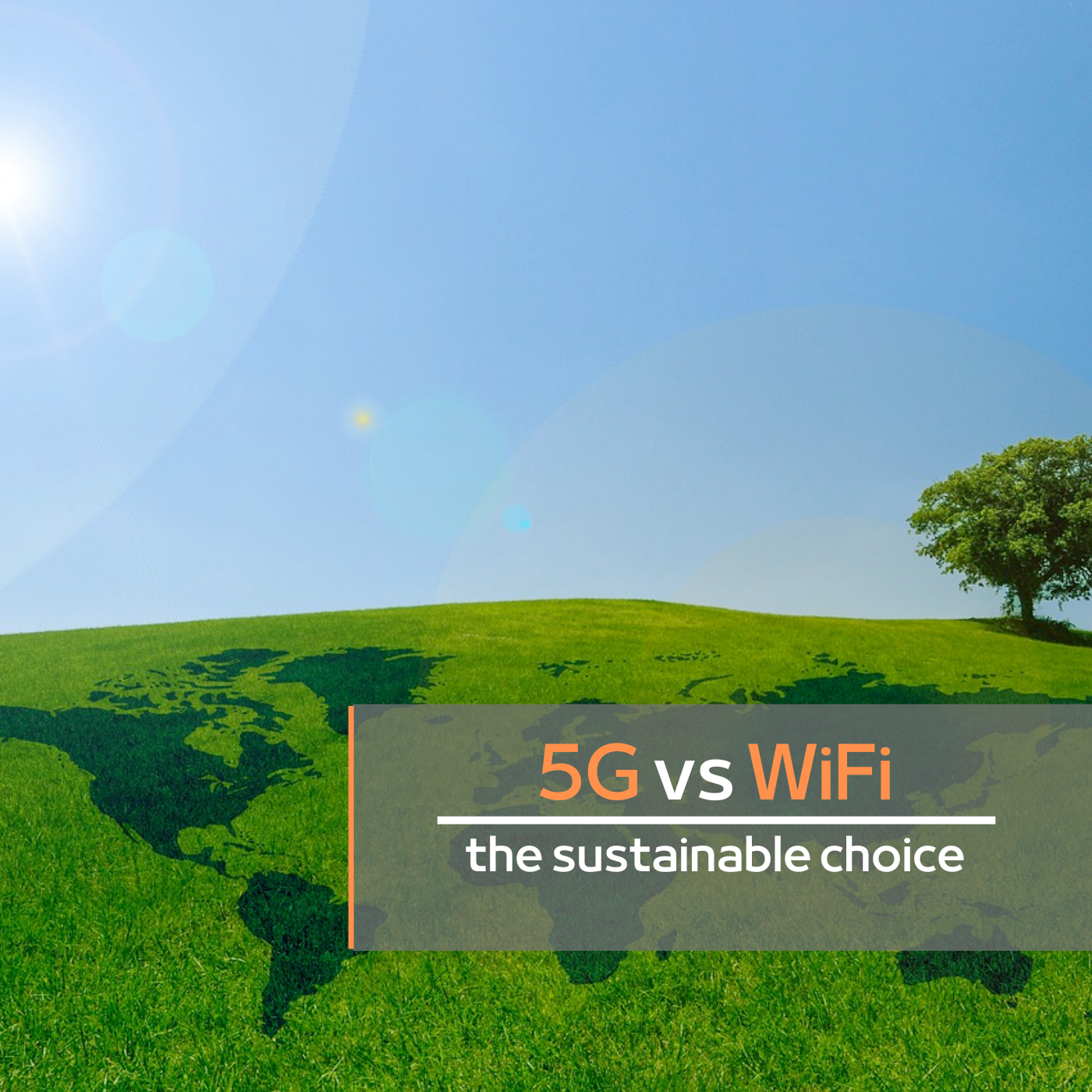In an age of rapid technological advancement, connectivity remains at the forefront of innovation. Businesses and organizations are increasingly pondering their options between WiFi and the evolving world of 5G, especially in private networks. While much of the discussion centres around speed, latency, and range, environmental sustainability is another critical aspect to consider. Let’s explore which option – WiFi or 5G – is the more sustainable choice.
Energy Efficiency: A Silent Contender
Traditionally, WiFi has been lauded for its lower energy consumption, attributed partly to its optimization for smaller coverage areas. However, 5G introduces more energy-efficient protocols and the ability to ‘sleep’ when not in use, potentially leading to significant energy savings over extended periods.
Infrastructure Complexity: A Comparison
WiFi’s infrastructure is relatively less complex, often requiring just a router connected to an internet line. In contrast, 5G necessitates a dense network of small cells, initially demanding more infrastructure and energy investment. However, the operational efficiency gains with 5G may offset these early energy costs.
Data Rates and Efficiency
5G boasts superior data rates, enabling faster data transmission. This speed can lead to shorter device active periods, resulting in reduced energy consumption per data transfer unit. WiFi might require devices to remain active longer to download the same data, potentially consuming more energy.
Scalability and Connectivity
A single 5G network could manage what requires multiple WiFi networks, thereby reducing the need for parallel infrastructures and decreasing the overall energy footprint. One of 5G’s strengths is its capacity to handle a more substantial number of connected devices simultaneously. This capability could be transformative in an era marked by the proliferation of IoT devices. However, at the moment, the private networks are in a frequency band where no traditional IoT sensors, trackers or actuators are available.
Reliability: A Key Factor
5G offers more reliable connectivity, resulting in more effective data transmission and lower redundancy. In contrast, WiFi often suffers from signal interference, leading to data loss and re-transmission, which consumes additional energy.
Indoor Applications: Exploring the Possibilities
Private 5G networks are revolutionizing indoor experiences with near-zero latency and highly efficient handovers. The potential in industrial settings is immense, with real-time precision control in manufacturing plants leading to more efficient operations and less resource waste.
The IoT Synergy
Regarding IoT, 5G shines with its potential for smart energy management, from smart lighting to predictive maintenance. Although the device side of private 5G networks still has room for improvement, the energy optimization capabilities of 5G can create a more sustainable ecosystem in the long run.
Conclusion: Balancing Choices for a Sustainable Future
While WiFi undoubtedly has its merits, especially in low-demand, smaller-scale scenarios, the future holds promise with 5G. Numerous devices’ scalability and efficient management lean towards 5G in the eco-friendly debate. As businesses invest in private 5G networks, understanding their potential for greener operations becomes crucial. The greenest technology isn’t just about the present but about envisioning a sustainable roadmap for tomorrow.
Adopting 5G is not merely an upgrade; it’s an investment in a sustainable future. While 5G is still evolving, its potential to drive digital and environmental revolutions appears limitless as it matures. The question shifts from “if” to “when” to make the sustainable shift to 5G.
The Strengths of WiFi
Of course, paying attention to WiFi’s advantages is essential. Even though 5G holds immense promise, comprehensive studies demonstrate that WiFi continues to excel in various dimensions.
Firstly, WiFi remains the most cost-effective solution for indoor environments. Its well-established technology is relatively inexpensive to install and maintain. For small to medium enterprises or households with modest data handling requirements and coverage needs, WiFi offers a cost-efficient solution that’s easy to set up.
Secondly, WiFi provides instant accessibility and ease of connection. Most devices come pre-configured to connect effortlessly to WiFi networks, making it a convenient option for users needing to be more technically proficient.
Thirdly, WiFi has a shallow learning curve. While 5G is still evolving and will require time and training for complete adaptation, WiFi is a technology already understood and embraced by millions worldwide.
WiFi also offers more flexibility for customization and is suitable for a wide range of applications, from home use to specialized business needs. With standards like WiFi 6 and 6E available, this technology continues to evolve to meet today’s demands.
Finally, WiFi is less complex in terms of licensing and regulation, making it a readily accessible technology for various use cases and geographical locations.
In summary, while 5G promises a revolutionary future, WiFi remains a reliable, convenient, and cost-effective solution for many connectivity needs. Research-backed evidence indicates that coexistence between these two technologies is possible and advantageous, each with its unique benefits that complement the other.

